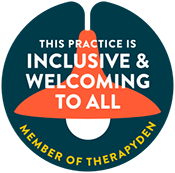Understanding the Different Types of Depression: A Compassionate Overview
Many individuals are familiar with the term depression, but fewer are aware that it can take on different forms. Each person’s experience with depression is shaped by their own story, environment, and inner dialogue. As a therapist, I help my clients name their experiences so they can begin to reclaim their narrative and build a path toward healing. Below, I describe four of the most common types of depression that I regularly work with in my practice.
1. Major Depressive Disorder
Major Depressive Disorder is often characterized by a profound and persistent sense of sadness or a loss of interest or pleasure in daily activities. In order for this diagnosis to be made, at least five symptoms must be present for two consecutive weeks, with at least one being either depressed mood or loss of interest. These episodes can recur over time and may feel overwhelming or isolating. Through cognitive behavioral strategies, we can challenge unhelpful thought patterns, while mindfulness practices help cultivate presence and gentleness toward your emotional state. Together, we can explore your story with compassion and develop tools that foster emotional resilience.
2. Persistent Depressive Disorder (Dysthymia)
Persistent Depressive Disorder, also known as dysthymia, is marked by a low-level, chronic feeling of sadness that lasts for an extended period—often two years or more. While the symptoms may not feel as acute as those in major depressive episodes, their ongoing nature can quietly erode self-esteem, motivation, and hope. In my work with clients, I often use positive psychology interventions to identify sources of strength and meaning that may have been overlooked. We also examine how long-standing beliefs about oneself and the world can shift to allow new possibilities to emerge.
3. Seasonal Affective Disorder (SAD)
Seasonal Affective Disorder typically occurs during the fall and winter months, although it can also affect individuals in the spring and summer. This form of depression is often influenced by changes in light exposure, which can disrupt natural rhythms and impact mood, sleep, and energy levels. Together, we can explore not only the biological and environmental contributors to your experience but also the internal narrative that may emerge during difficult seasons. Using CBT and mindfulness techniques, we can increase emotional awareness and create adaptive rituals that support your well-being year-round.
4. Postpartum Depression
Postpartum Depression is a serious condition that can affect individuals who have recently given birth. It may show up as sadness, anxiety, numbness, exhaustion, or a feeling of disconnection from oneself or the baby. Unlike the “baby blues,” which typically resolve within a few weeks, postpartum depression can linger for months or even years without support. I offer a safe, nonjudgmental space to process these feelings and gently explore the underlying thoughts and pressures that may be contributing to your emotional distress. Through narrative and mindfulness-based approaches, we work to foster self-compassion, reduce guilt, and reframe the story of motherhood or parenting in a way that feels more honest and empowering.
You Deserve Support
If you believe you may be experiencing depression—whether it fits one of these categories or feels like something else entirely—I am here to help. I understand that depression often distorts the way you see yourself and the world, but together we can untangle those stories and build new, more hopeful ones. I will work collaboratively with you to create a personalized plan rooted in your values, strengths, and goals.
Please reach out to schedule a session. You do not have to walk through this alone. Healing begins with one courageous step, and I am here to take that step with you.
